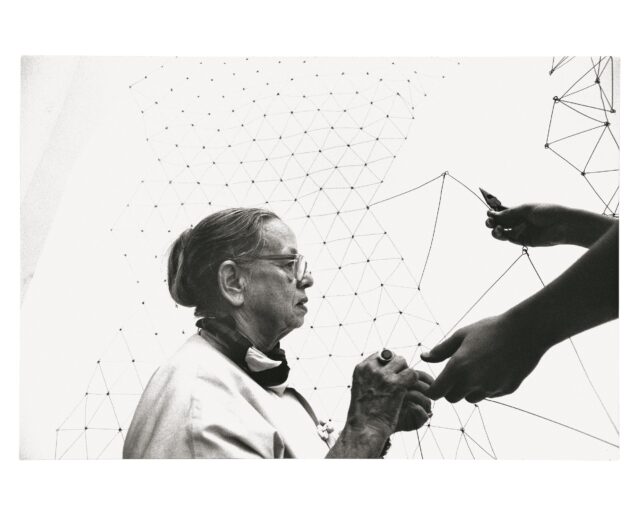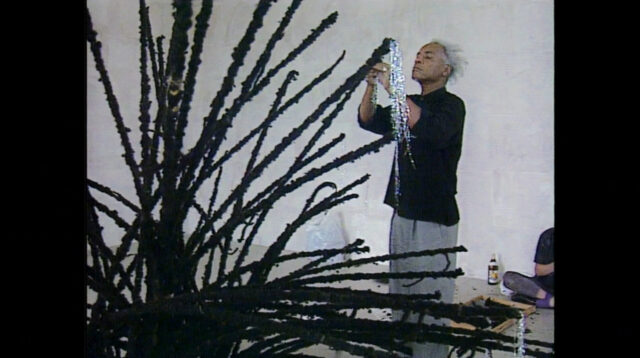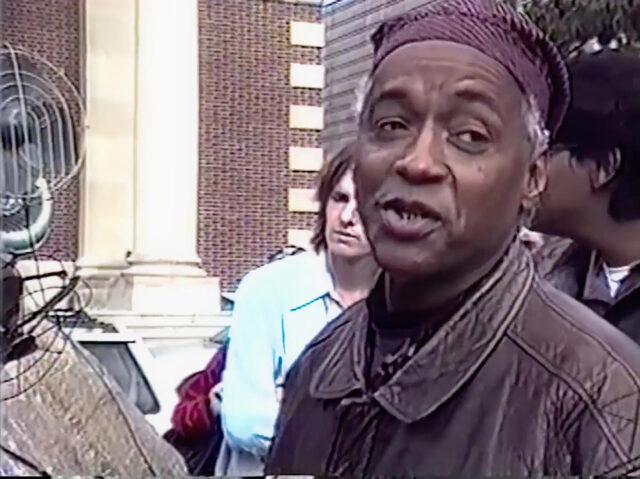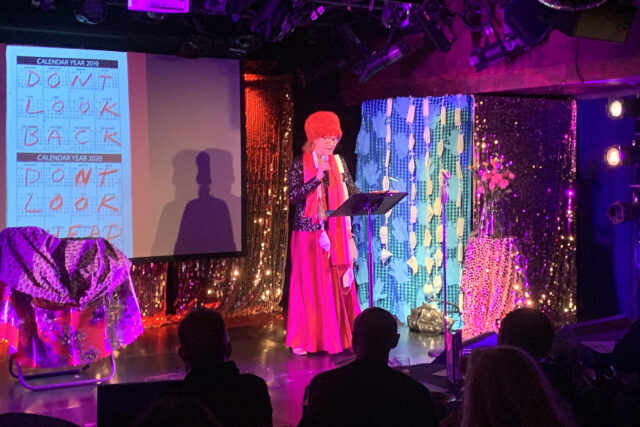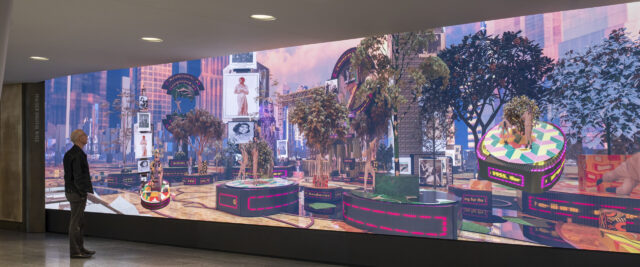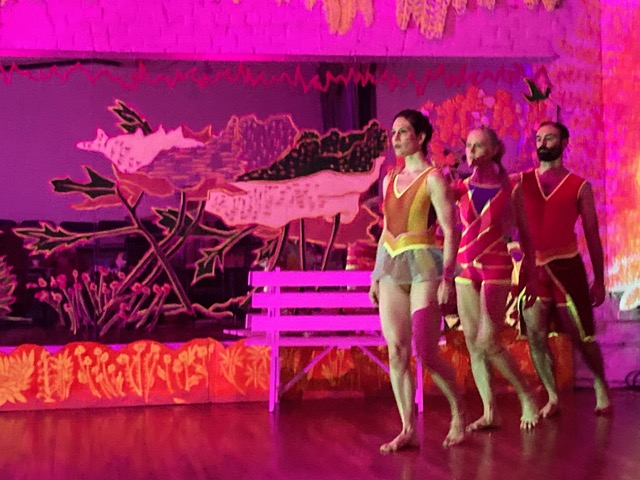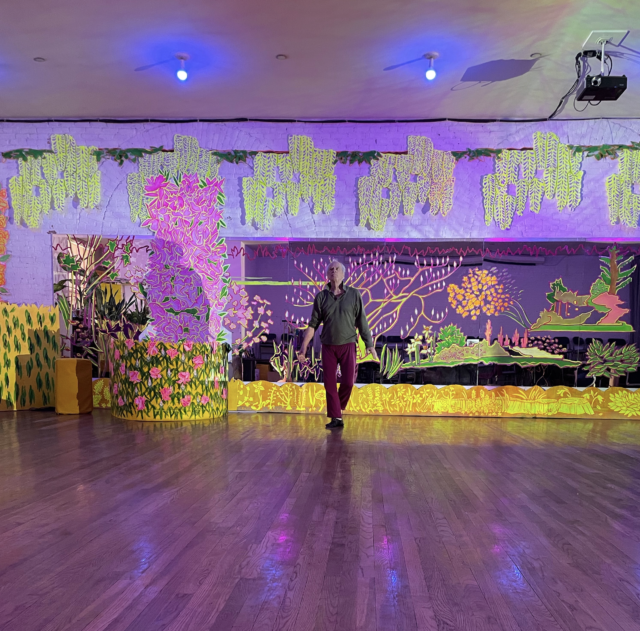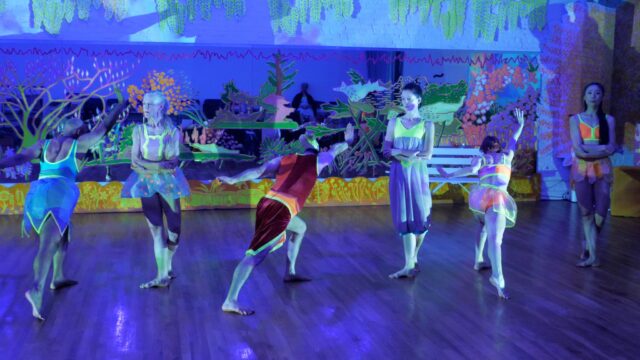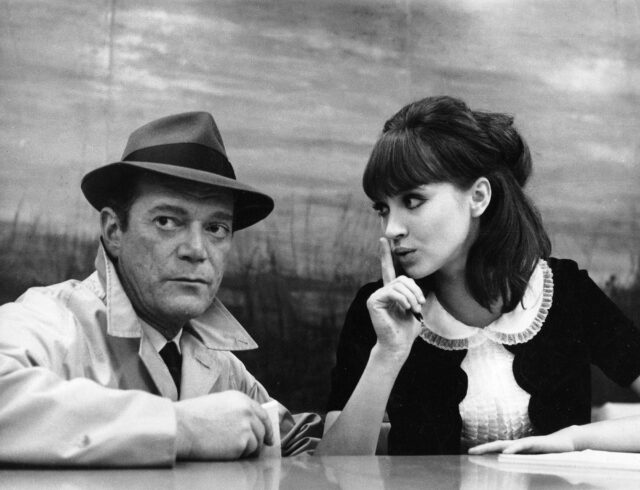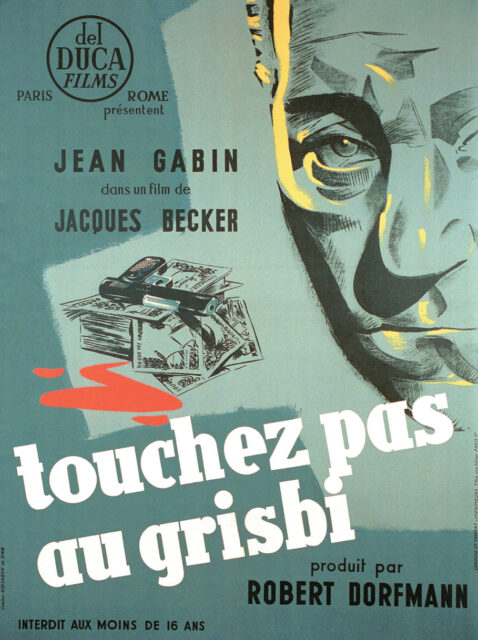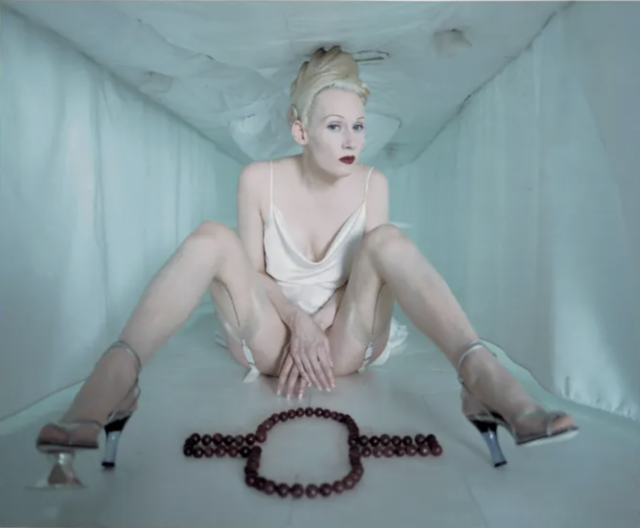
Marti Domination squeezes into a tight space in Cremaster 1
MATTHEW BARNEY: THE CREMASTER CYCLE AND SELECT EARLY WORKS
Metrograph
7 Ludlow St. between Canal & Hester Sts.
Opens May 17
212-660-0312
metrograph.com
www.cremaster.net
Matthew Barney’s Cremaster is so much more than five essentially incomprehensible films totaling seven hours made over the course of eight years out of chronological order; it’s a state of mind, a whole other level of consciousness. The complete series, which will never, according to Barney, be available on DVD or cable or any other salable personal format, is rarely shown in its entirety; the last times it was seen in New York City were the world premiere in 2003 at Anthology and in 2015 at IFC. Ostensibly following the ascension and descension of the cremaster muscle, which raises and lowers the testicles as sexual differentiation takes place inside the human body, the films feature strange characters in odd metaphorical situations that are rarely immediately apparent; watching the films, I found myself continually referring to Cremaster Fanatic, which offers excellent meta-descriptions of each work, breaking down each bizarre symbol. But that doesn’t mean the narrative is impossible to follow or overly convoluted; instead, part of the fun is trying to figure out just what the heck is going on.
In conjunction with the opening of Barney’s latest exhibit, the free five-channel video installation “Secondary,” continuing in the artist’s Long Island City studio through June 25, Metrograph will be presenting the full cycle beginning May 17. On June 4, Barney, whose other films include the five-and-a-half-hour River of Fundament and the Drawing Restraint series, will be at Metrograph for a conversation with American writer Maggie Nelson following a special screening of remastered early works.
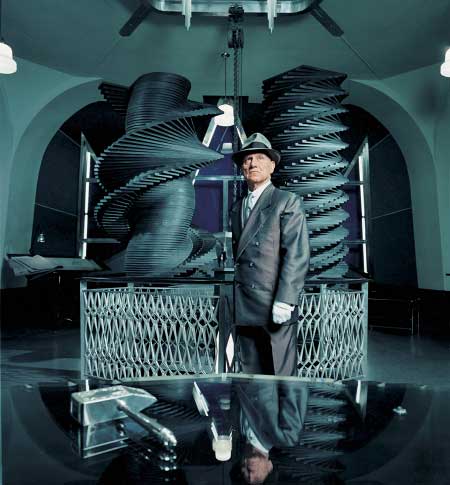
Artist Richard Serra plays the Architect in Cremaster 3
In Cremaster 1 (1995), the Goodyear blimp hovers over a stadium where the young Barney, a former quarterback, played football. Bright colors dominate as four flight attendants peer out the window, unaware that beneath a table topped with a Vaseline centerpiece a platinum blonde (Marti Domination) is stealing grapes. A beautifully choreographed Busby Berkeley-like dance ensues. In Cremaster 2 (1999), Barney plays Gary Gilmore, re-creating the murder of Mormon gas station employee Max Jensen. There’s also a séance led by Baby Fay La Foe, graphic sex, a queen bee and her drones, the Bonneville Salt Flats, the Mormon Tabernacle, and Norman Mailer, who wrote The Executioner’s Song about Gilmore, as Harry Houdini at the World’s Columbian Exposition of 1893.
At three hours, Cremaster 3 (2002) is the longest and easiest to follow of the series. It details the heated 1929 fight between the Chrysler Building and the Bank of Manhattan (40 Wall St.) to be the tallest structure in New York, framed by the Irish legend of Fionn and Fingal and the Giant’s Causeway. The cast features Barney as the Entered Apprentice climbing up the Guggenheim’s spiral walls, conceptual artist Richard Serra as the Architect (Hiram Abiff) and himself (melting Vaseline that drips down the length of the museum), amputee Aimee Mullins as the Entered Novitiate, singer Paul Brady as the Cloud Club maitre d’ serving a small group of gangster-like Masons, Terry Gillespie as a bartender with a bit of a Guinness problem (in the series’ funniest scene), and punk bands Agnostic Front and Murphy’s Law engaged in a musical battle.
In Cremaster 4 (1994), the Ascending and Descending motorcycle sidecar teams race for the Tourist Trophy on the Isle of Man while the Loughton Candidate (Barney) carefully combs his hair (he has four potential horns on his head) and tap-dances as a trio of faeries bandy about. And in Cremaster 5 (1997), the Queen of Chain (Ursula Andress) belts out a Hungarian opera above the Gellert Baths, where Fudor Sprites swim and Jacobin pigeons are prepared for a special purpose, with Barney appearing as the Queen’s Diva, the Queen’s Magician, and the Queen’s Giant.
Watching The Cremaster Cycle is an unforgettable experience, a thrilling foray into experimental film at its finest. It’s both mind-blowing and infuriatingly confusing, stunningly gorgeous and utterly ridiculous. Everything in it is laden with meaning, though you’ll be hard-pressed to know what much of it is about. And there are more references to male genitalia than in any teen sex comedy ever made. The films will screen at select times at Metrograph over several weeks, with tickets, which will sell out quickly, available seven days in advance. The Cremaster Cycle is more than just a cinematic art project; it’s an event that has to be seen to be believed.

